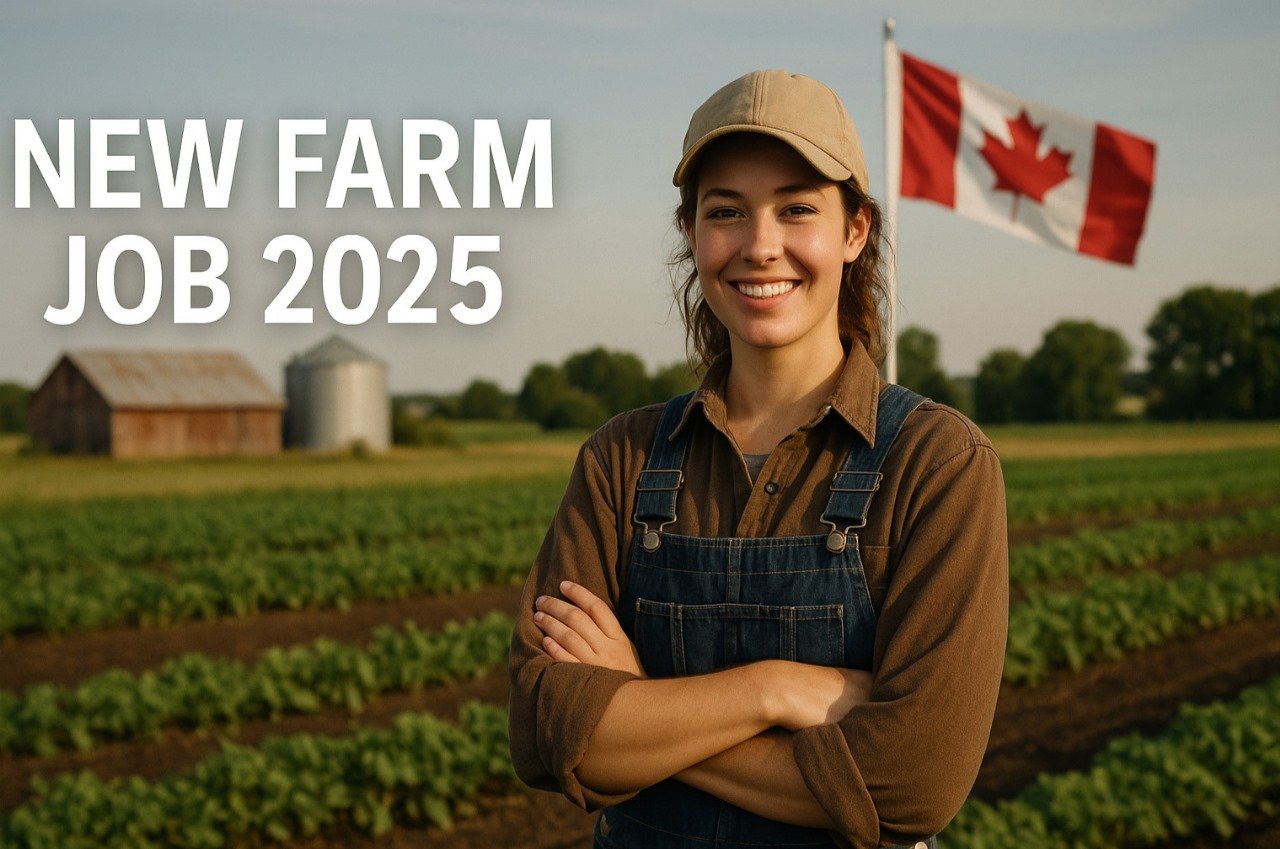🇨🇦 New Farm Jobs in Canada 2025
Walk into any rural farming community in Canada in 2025, and you’ll hear the same thing: “We’re short on workers again this year.” From the strawberry fields of British Columbia to the grain farms of Saskatchewan, there’s a massive demand for people who aren’t afraid of getting their hands dirty.
Whether you’ve got experience working land or you’re just looking for a chance to get your foot in the door with a stable job and maybe even a work visa, this year is your chance.
🌱 Why Farm Jobs in Canada Are a Big Deal Right Now
Let’s not sugarcoat it—Canada’s farming industry is stretched thin. A mix of aging farm owners, unpredictable weather, and not enough local applicants means thousands of seasonal and full-time positions are opening up in 2025.
In places like Ontario and Alberta, some farms are running at half capacity simply because they can’t find enough help. This isn’t just about fruit picking either. There are jobs in greenhouses, dairy operations, crop harvesting, equipment handling—you name it.
👷♂️ Who Are They Hiring?
Here’s what Canadian farms are actually looking for this year:
- People Willing to Work Hard
It’s physical work—lifting, bending, walking long hours—but most employers don’t require experience. They’re willing to train people who show up ready to work.
- Workers From Abroad
If you’re applying from overseas, you’re in luck. Farms that qualify under the LMIA (Labour Market Impact Assessment) are allowed to hire foreign workers and help with visas. Many of them are already doing this because they simply don’t have enough local applicants.
- Folks Open to Relocating
Rural areas like Saskatchewan, Manitoba, and Prince Edward Island have great opportunities—but not a lot of locals to fill them. If you’re willing to move, you’ll have more choices.
📍 Where the Jobs Are in 2025
🍎 Ontario
Farmers around Leamington and Niagara are hiring for greenhouse roles and apple picking. These are often full-season gigs, with housing provided. One recruiter I spoke to said they’re looking for at least 300 workers this summer alone.
🍓 British Columbia
The berry farms in Abbotsford and Chilliwack get busy from May through August. Some offer bonuses based on how much you harvest. If you’re quick with your hands and don’t mind the sun, it’s a good way to earn.
🐄 Alberta
This is cattle and dairy country. There’s a growing need for livestock hands, milking technicians, and general laborers near places like Red Deer and Lethbridge. Many of these jobs come with longer contracts—some even offer permanent work permits after a few years.
🌾 Saskatchewan & Manitoba
You’ll find more grain, wheat, and canola farms here. Most farms are large and family-run, and they value reliability over anything. One farmer told me: “You don’t need to know how to run a combine, but show up on time and don’t complain about the mud.”
🍇 Quebec
There’s seasonal demand for fruit pickers and vineyard helpers, especially in regions like Montérégie and Estrie. While knowing French helps, it’s not always required.
✈️ What If You’re Not Canadian?
Don’t let that stop you. In fact, a lot of the work available right now is open to international applicants.
Here’s What to Do:
Find a Farm That Offers Visa Sponsorship
Look for terms like “LMIA available” or “visa sponsorship included.” Sites like JobBank.gc.ca or AgCareers.com list hundreds of active farm job ads.
Apply Directly or Through a Recruiter
Some employers use staffing agencies that help with visa paperwork and placement. Do your research and avoid anyone asking for upfront payment.
Wait for LMIA Approval & Apply for a Work Permit
Once you get a job offer, the employer submits an LMIA. If approved, you apply for a Canadian work permit from your country.
Pack Your Bags
Most farm jobs start between April and July, though greenhouses and dairy farms may hire year-round.
🛌 Perks You Might Not Expect
Free housing on or near the farm (often shared but clean)
No experience required for many roles
Quick hiring—some farms will take you within days if you’re in Canada
Fair pay (typically $15–$22/hour depending on the job and location)
Chance to stay longer if you prove yourself
🗣️ A Word From the Field
Here’s what Harjit, a worker from Punjab, told me:
“I started on a tomato farm in Ontario last year. I didn’t have farm experience, but the team trained me. After six months, I was managing the irrigation system. This year, they’re sponsoring me again—and I’m bringing my cousin with me.”
🔁 Quick Recap
If you want to work on a farm in Canada in 2025, here’s what matters:
Start applying early in the season
Don’t worry if you don’t have experience
Focus on LMIA-backed employers if you’re from overseas
Be open to relocating within Canada
Use official job platforms (and steer clear of scams)
📣 Before You Go
Thinking about applying? Take the leap. These opportunities don’t last forever—and the sooner you get your paperwork started, the better.
👇 Have questions about specific jobs, regions, or the visa process? Drop a comment below or share this article with someone who might be looking. We’ll be answering questions weekly.
